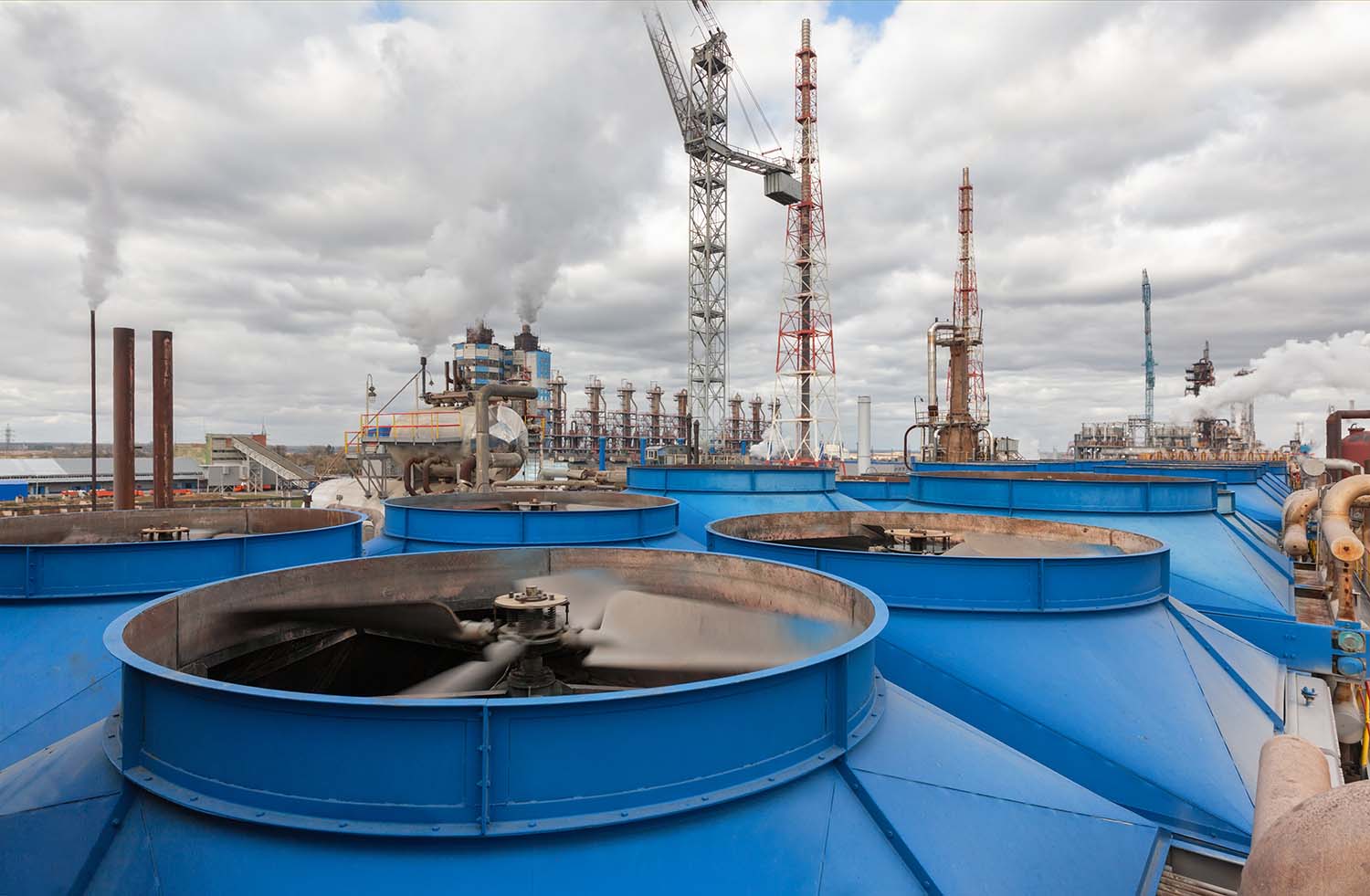Three Common Cooling Tower Issues

In large HVAC systems, cooling towers often provide critical support when it comes to keeping components cooled. Like any HVAC unit – towers must be monitored and maintained to function efficiently and achieve a long lifespan. Part of this monitoring means looking out for common problems that exist in most towers. Knowing how to identify these cooling tower issues and implement solutions can add years to the unit’s lifespan – not to mention, keep it functioning at its top potential throughout that lifespan.
Corrosion
When you expose metal to water over time, the risk of corrosion almost always exists. Cooling towers rely on circulating water to function, and the addition of dissolved solids that exist in that water makes corrosion an even bigger threat. Therefore, operators need to be aware of the corrosion risk and trained in ways to prevent and treat it.
Corrosion is not just unsightly to look at. It also can be detrimental to the structural integrity of a cooling tower if not addressed. As rusting on metal surfaces increases in severity, so does the risk of leaks. The presence of leaks in a cooling tower means more water is needed for the tower to function – increasing operating costs and decreasing efficiency. Also, advanced corrosion may lead to owners having to replace certain tower components – an added expense that is highly preventable with the proper preventative maintenance.
So, how does a tower operator prevent corrosion? There are a few tactics used in preventing and treating the destructive process. As manufacturing capabilities increased over the past several decades, alternative cooling tower materials came to be used. Corrosion is mainly an issue with metal surfaces. So, many manufacturers now craft units out of alternative materials, including fiberglass and engineered plastic.
For metal towers, not all hope is lost. Corrosion can be prevented and/or treated in many cases. There are several options for corrosion-resistant coatings, which are applied to all metal surfaces within a tower. Also, frequently cleaning towers helps to reduce or slow down the corrosion process, because it removes some of the built-up minerals that harm the metal.
Drift
While not an issue in itself, drift occurs in all cooling towers when water exits the unit as liquid droplets rather than through the evaporation process. The issue arises when excess drift leaves a cooling tower. Not only can these water droplets cause corrosion on the exterior surface of the tower. They also carry with them bacteria and microorganisms that then are dispersed into the environment. Because some of these are dangerous when ingested by humans, eliminating as much drift as possible means a safer environment for tower operators and others in the area.
Luckily, drift eliminators do just that – eliminate drift as much as possible. Nearly all towers are now equipped with drift eliminators, but there are additional safeguards that can be installed to further mitigate the issue.
Harmful Microorganisms
As previously mentioned, water leaving a cooling tower as drift can easily carry microorganisms to the external environment. Some of these, such as Legionella, can cause dangerous or even deadly conditions when ingested in large amounts. One of the most dangerous bacteria is Legionnaires’ disease, a very serious form of lung infection that makes breathing difficult or near impossible. Over the years, there have been outbreaks of Legionnaires’ disease due to people ingesting contaminated water droplets – specifically from cooling towers.
Now, why do these bacteria grow in cooling towers in the first place? The answer is simple – cooling towers provide a moist, warm environment that encourages the growth of bacteria and other organisms. Not all of these are harmful, but closely monitoring water quality and measuring the presence of microorganisms can allow operators to assess when water treatment applications are required.
There are a variety of treatment solutions on the market, varying as much in environmental-friendliness as they do in makeup and price. The ASHRAE provides guidance regarding chemical water treatment recommendations. An alternative to harsher chemicals has recently gained momentum – ozone. Because of its oxidative power, ozone can neutralize bacterial growth in water with less of an environmental impact than its harsher chemical alternatives.
Preventative Maintenance for Efficient Cooling Tower Operations
Taking the necessary precautions and creating a preventative maintenance plan is the best way to either avoid the cooling tower issues mentioned above or reduce their impact on the efficiency and lifespan of the unit. Certain aspects of tower operation need to be monitored daily, while other tasks are recommended on a less frequent basis and can generally be addressed via regular maintenance sessions. Depending on tower size and heat rejection load, this may mean every 6 months or once a year.
A maintenance plan with Cooling Tower Experts brings you peace of mind, knowing that all aspects of a tower are regularly inspected, adjustments made, and issues identified before they escalate into something major. Our team of experts brings years of experience in both product knowledge and in-the-field installation and maintenance. Our trained eyes note areas of concern often long before the effects of those issues start to appear.
Whether you need to consult about the best tower to install for your HVAC system or have one in place already that needs a good inspection and plan set in place – Cooling Tower Experts is here to help. Contact us to begin your next cooling tower project today.